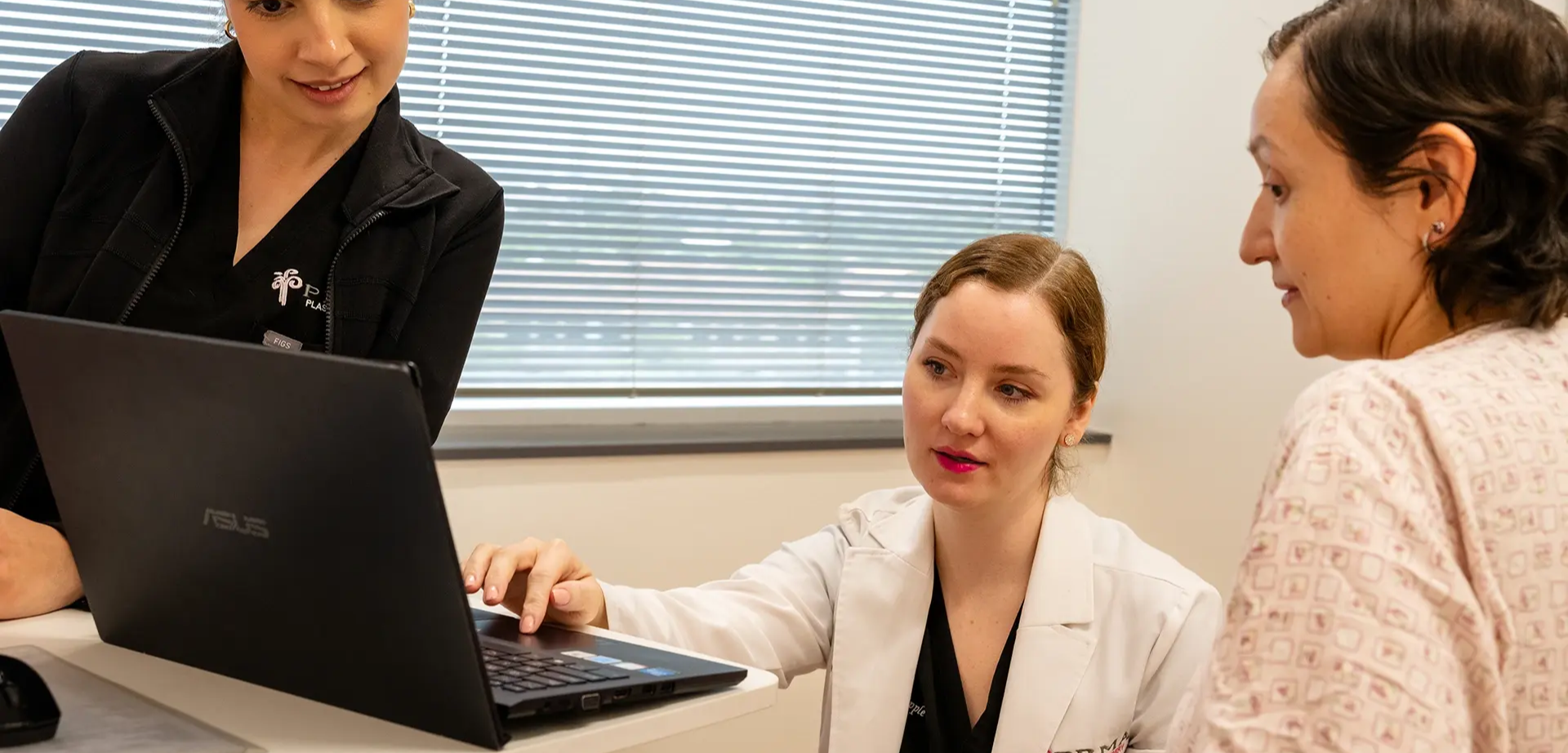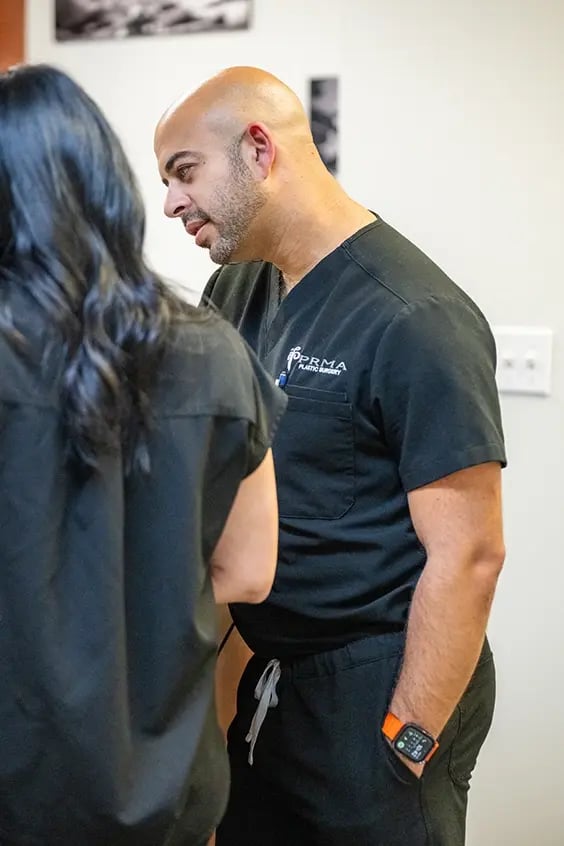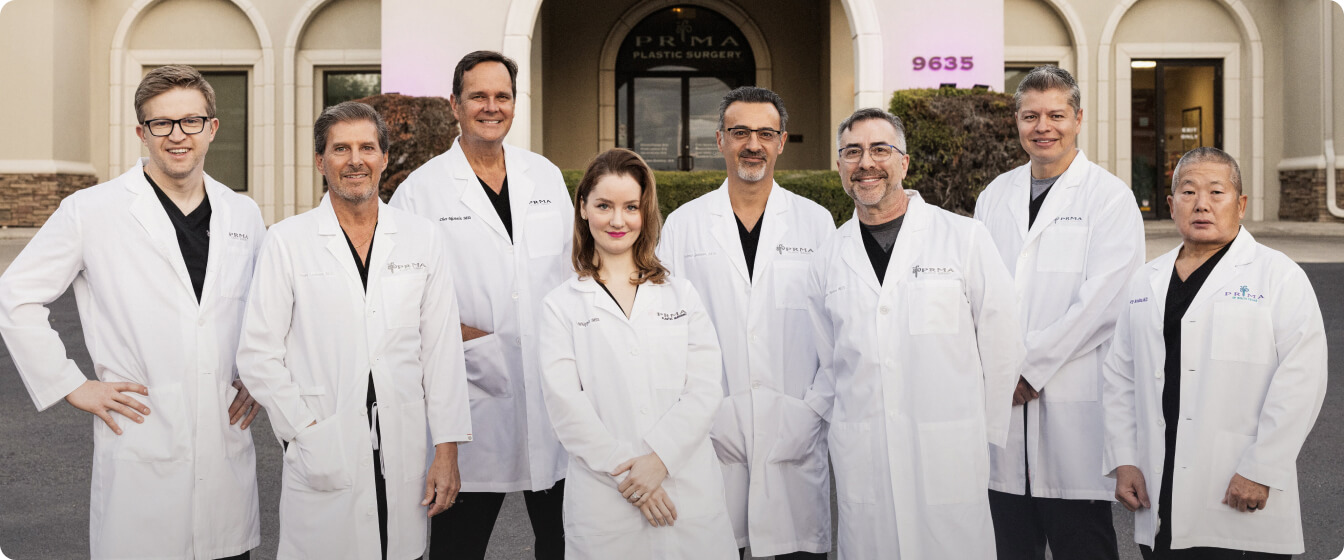
Abdominal Flaps for Breast Reconstruction (DIEP, SIEA, and TRAM Flap Surgeries)
What Are Abdominal-Based Flaps?
Abdominal flap breast reconstruction surgeries use skin, fat, and sometimes muscle from the lower belly to rebuild the breast after mastectomy. This approach offers a natural look and feel using your own tissue, with the added benefit of a tummy tuck-like contour.
Some common techniques include the TRAM flap and the SIEA flap. Compared to other natural reconstruction options like thigh- or buttock-based flaps, abdominal flaps often provide the most volume and are the most commonly used.
Abdominal Flap Reconstruction: Key Information
- Uses skin and fat from the lower belly to recreate the breast.
- Provides a natural look and feel using your own tissue.
- Often includes the added benefit of a tummy tuck.
- DIEP flap uses skin and fat only, no muscle, helping preserve core strength and support a faster recovery compared to traditional TRAM flaps.
- TRAM flap uses abdominal muscle, fat, and skin, which may impact core strength and recovery time.
- Muscle-sparing TRAM preserves more muscle to reduce abdominal weakness.
- SIEA flap avoids muscle entirely and offers the easiest recovery, but is only an option if specific surface vessels are present.
- Ideal for patients seeking long-term, implant-free reconstruction with natural results.
Understanding Your Options
DIEP Flap
SIEA Flap
TRAM Flap (Traditional)
TRAM Flap (Muscle-Sparing)
What to Expect During Surgery
At PRMA, two highly experienced microsurgeons work together to perform every natural tissue reconstruction, enhancing safety, shortening anesthesia time, and improving surgical precision.
Surgeons begin by carefully removing the tissue needed from the lower belly. Only skin and fat are taken in a DIEP or SIEA flap, preserving the abdominal muscles. The difference lies in the blood vessels used: the DIEP uses deep vessels that require microsurgical precision, while the SIEA uses more superficial vessels when they’re present. In a TRAM flap, a portion of the abdominal muscle is included with the tissue, affecting recovery and core strength.
Once the tissue is removed, it’s transferred to the chest, shaped into a breast, and its blood vessels are meticulously reconnected under a microscope to ensure healthy blood flow. The surgeons then close the incisions, and patients are monitored as they begin healing.

Before & After








Recovery Timeline
-
Week 1:After surgery, most patients stay in the hospital for 2–4 days. During this time, managing pain, monitoring the flap, and beginning gentle movement is the focus.
-
Weeks 2-4:At home, rest is essential, but light walking is encouraged to support healing. Swelling, bruising, and fatigue are completely normal at this stage.
-
Weeks 4-6:By this point, most patients notice improved mobility and energy. Depending on how they feel, many can return to non-strenuous daily activities or desk work.
-
Weeks 6-12:Light exercise may resume with your surgeon’s approval, though abdominal strain should still be avoided. Most patients feel a meaningful shift in their recovery—less fatigue, more confidence, and greater physical comfort. The breast shape continues to settle, and scars begin to soften.


The Nation’s Destination for
Sensation Restoration
Am I a Candidate for Abdominal Flap Reconstruction?
Abdominal flap reconstruction can be a great option for many women, especially those seeking a long-term, natural solution without implants. Whether it’s a DIEP, SIEA, or TRAM flap, these procedures use tissue from your lower belly to recreate the breast. However, candidacy depends on a few key factors.
You may be a candidate for abdominal flap reconstruction if:
- You have enough skin and fat in the lower abdomen.
- You prefer a natural alternative to implants.
- You haven’t had extensive abdominal surgeries that may affect blood vessels.
- You’re in generally good health and able to undergo a longer surgery.
- You’re seeking a long-lasting reconstruction option with fewer future procedures.
- You want a reconstruction that looks and feels more like your natural body.
- You’ve had implant complications or are considering revision.
Find Your Surgeon
Will Insurance Cover DIEP, SIEA, or TRAM Flap?
Thanks to the Women’s Health and Cancer Rights Act (WHCRA), most health insurance plans that cover mastectomy are also required to cover reconstruction, including natural tissue procedures. At PRMA, we’re proud to be insurance-friendly and accessible to patients nationwide, so you can focus on healing, not red tape.
For more information, visit [Insurance FAQs] in the patient resource center.

Preparing for Abdominal Flap Reconstruction Surgery
Learn more about:




